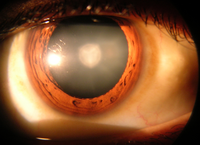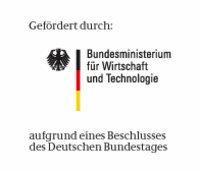Individual Intraocular lens Implantation system
State of the art
Cataract is the most frequent eye disease, where the crystalline lenss of the eye becomes opaque and the vision cloudy (Fig.1). Nowadays for about 40 % of elder people in Europe have potential risk of developing cataract. Expectancy of life increases globally along with medical progress.
Twenty million cataract surgeries are carried out globally each year. During the surgery the opaque lens is removed by a special microsurgical procedure (phacoemulsification) and replaced by an artificial intraocular lens (IOL). Nowadays cataract surgery is considered as ambulatory standard procedure.
There are many local and internationally known companies specialized on developing IOLs. There exist IOLs with different geometries and materials: rotationally-symmetric , toric (for compensating astigmatism), Diffractive or accommodative, and others. Some manufacturers also offer IOLs with an ellipsoidal symmetry of rotation for compensating spherical aberration. Up to now there haven't been designed IOLs for compensating the patients' individual aberrations. Currently in the clinical practice for determining the standard IOL parameters the IOL Master (Zeiss Meditec) is used. However, it isn't able to consider the individual aberrations completely and also cannot predict the future placement of the implanted IOL. Nevertheless IOLs with abilities to correct the individual aberrations will improve the life quality essentially. Free-form optical surfaces (with final surface polishing) may enable the customizing of IOLs. Currently the clinical routine for the measurement and calculation of IOLs applies only for spheric, toric and multifocal lenses. Particularly it doesn't apply to the aspheric IOL optics introduced recent years. The development of a measurement technique for individual IOLs is therefore necessary.
Project aims
It's our objective to develop the simulation and production of an IOL completely correcting the individual optical aberrations. To successfully achieve this objective several steps have to be completed:
- Development of a diagnostic procedure completely measuring the aberrations of the individual human eye along with a simulation predicting the exact location of an IOL after surgery with precision and reliability,
- Development of a software for calculating individual IOLs by taking into account the measurement data of the patient's eye.
- Design of a suitable haptic which, by means of its geometric properties, eliminates dislocation, decentration, tilt and rotation and reliably holds the IOL in its predicted location
- Development of a measurement technique, including programming and a standardized protocol for quality control of an individual IOL,
- Development of the corresponding technical documentation, including assessment and benchmarking, for a medical product of class IIb






